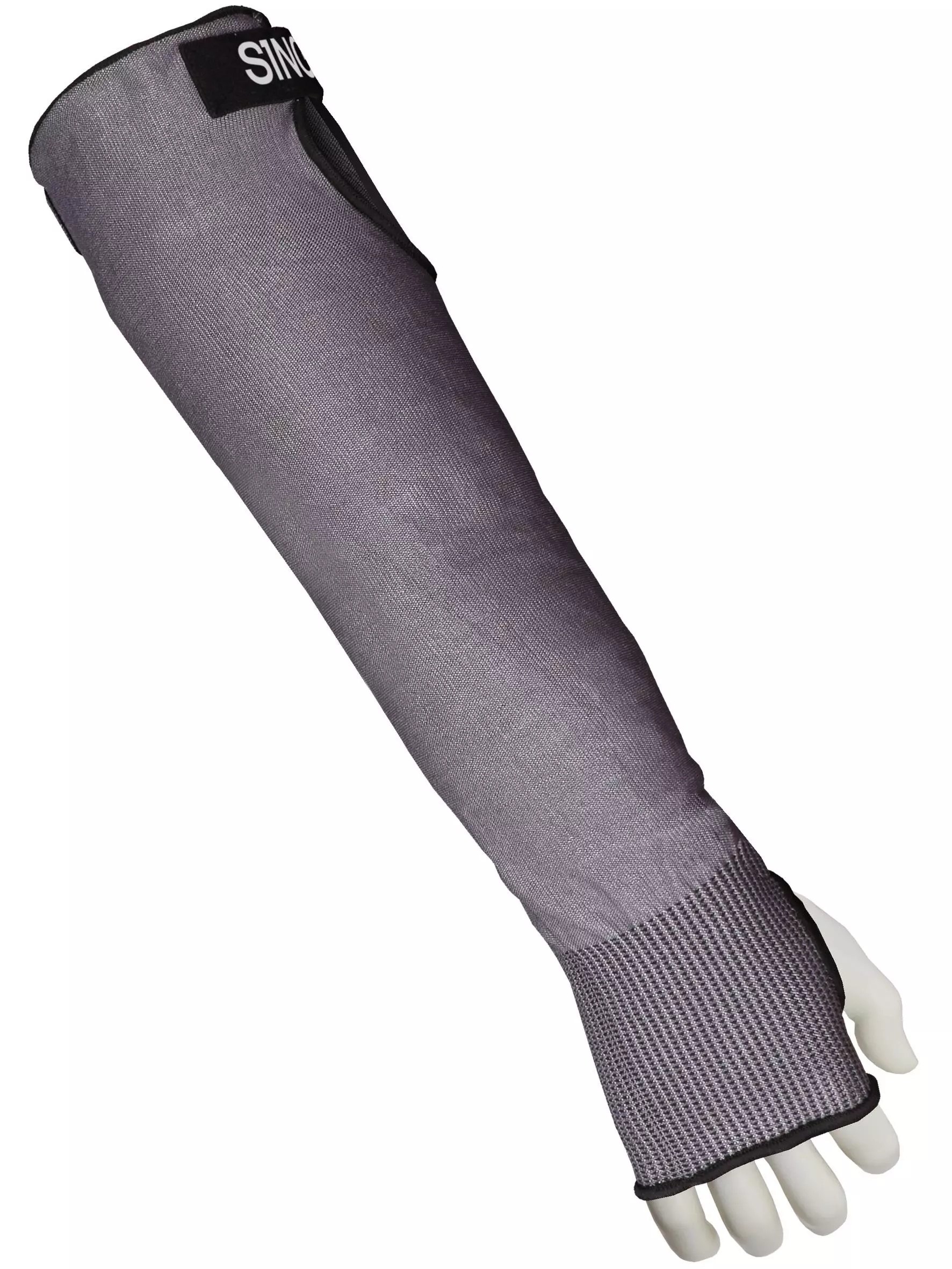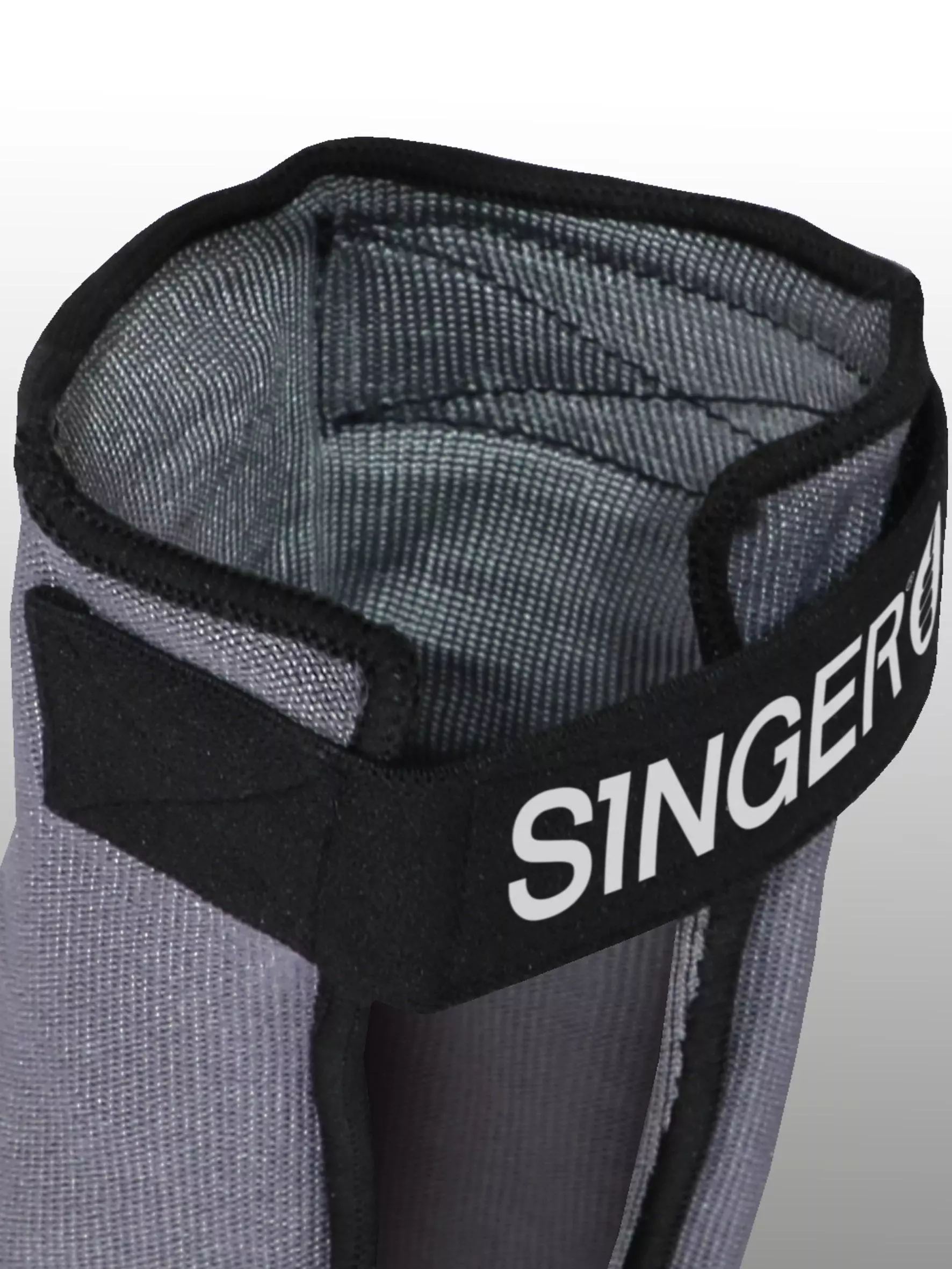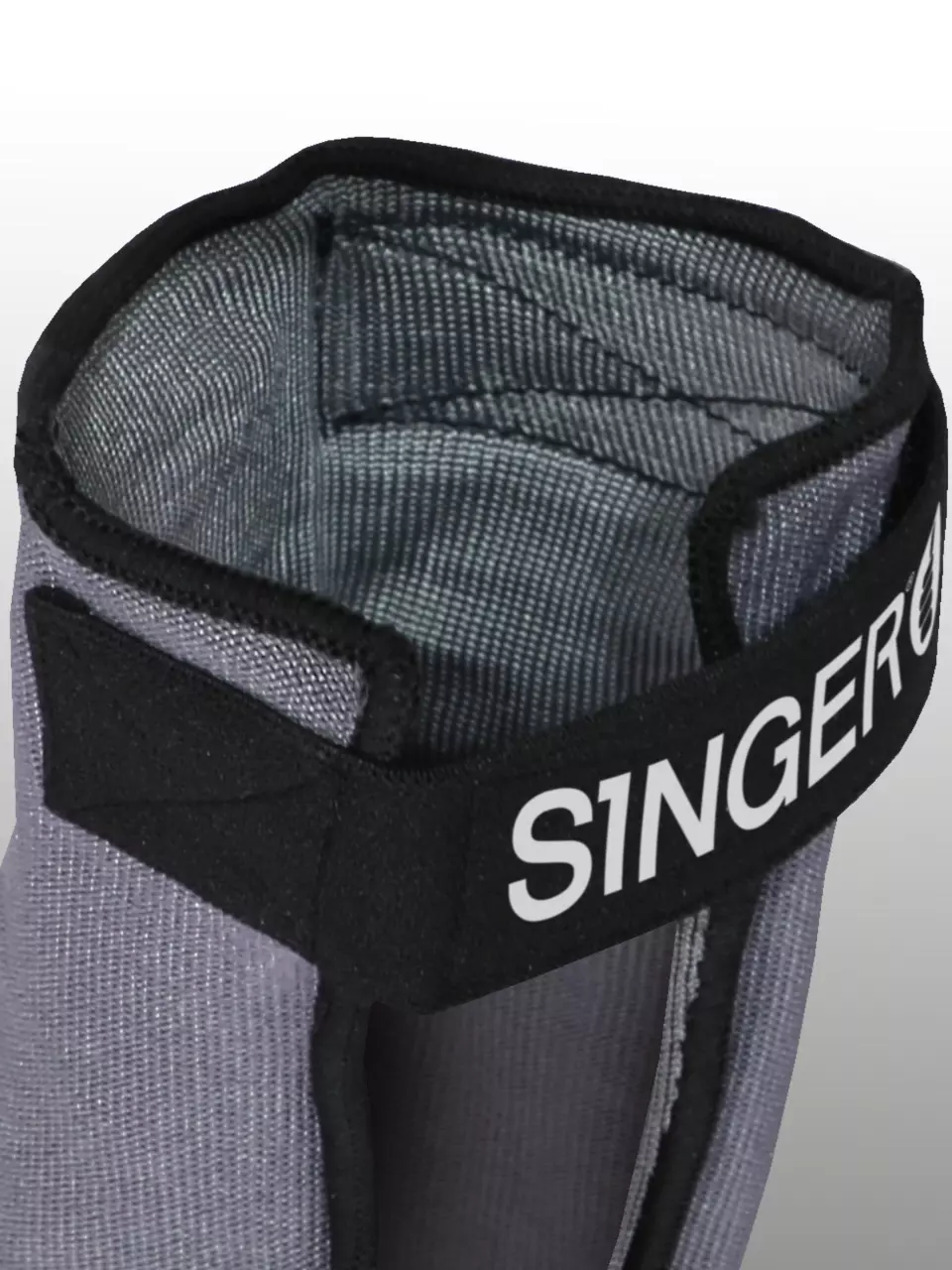These protective sleeves offer superior cut resistance with TDM level D certification, providing reliable protection for industrial applications. Constructed from a blend of high-density polyethylene, polyamide, and elastane, they feature a seamless knitted liner for comfort and non-irritation during extended wear. The ergonomic design includes elbow adjustment with hook-and-loop closure and a thumb opening for secure positioning during work activities.
Product Features:
- Excellent cut resistance with TDM level D certification
- Seamless knitted liner for non-irritating wear
- Adjustable elbow with hook-and-loop flap for secure fit
- Thumb opening for proper positioning
- Ambidextrous design for versatile use
Technical Details:
- Material composition: 74% high density polyethylene, 23% polyamide, 3% elastane
- Gauge: 13
- EN 388:2016+A1:2018 protection ratings: 3542D
- Category II Personal Protective Equipment
Recommended Applications:
- Heavy industry
- Light industry
- Finishing operations
- Maintenance tasks
Standards:
- EN ISO 21420:2020 for general glove requirements
- EN 388:2016+A1:2018 for mechanical protection
- Compliant with European Regulation (EU) 2016/425
- ISO 9001/ISO 14001 certified production
EAN: 3660514252202, 3660514252219
These protective sleeves offer superior cut resistance with TDM level D certification, providing reliable protection for industrial applications. Constructed from a blend of high-density polyethylene, polyamide, and elastane, they feature a seamless knitted liner for comfort and non-irritation during extended wear. The ergonomic design includes elbow adjustment with hook-and-loop closure and a thumb opening for secure positioning during work activities.
Product Features:
- Excellent cut resistance with TDM level D certification
- Seamless knitted liner for non-irritating wear
- Adjustable elbow with hook-and-loop flap for secure fit
- Thumb opening for proper positioning
- Ambidextrous design for versatile use
Technical Details:
- Material composition: 74% high density polyethylene, 23% polyamide, 3% elastane
- Gauge: 13
- EN 388:2016+A1:2018 protection ratings: 3542D
- Category II Personal Protective Equipment
Recommended Applications:
- Heavy industry
- Light industry
- Finishing operations
- Maintenance tasks
Standards:
- EN ISO 21420:2020 for general glove requirements
- EN 388:2016+A1:2018 for mechanical protection
- Compliant with European Regulation (EU) 2016/425
- ISO 9001/ISO 14001 certified production
EAN: 3660514252202, 3660514252219
These protective sleeves offer superior cut resistance with TDM level D certification, providing reliable protection for industrial applications. Constructed from a blend of high-density polyethylene, polyamide, and elastane, they feature a seamless knitted liner for comfort and non-irritation during extended wear. The ergonomic design includes elbow adjustment with hook-and-loop closure and a thumb opening for secure positioning during work activities.
Product Features:
- Excellent cut resistance with TDM level D certification
- Seamless knitted liner for non-irritating wear
- Adjustable elbow with hook-and-loop flap for secure fit
- Thumb opening for proper positioning
- Ambidextrous design for versatile use
Technical Details:
- Material composition: 74% high density polyethylene, 23% polyamide, 3% elastane
- Gauge: 13
- EN 388:2016+A1:2018 protection ratings: 3542D
- Category II Personal Protective Equipment
Recommended Applications:
- Heavy industry
- Light industry
- Finishing operations
- Maintenance tasks
Standards:
- EN ISO 21420:2020 for general glove requirements
- EN 388:2016+A1:2018 for mechanical protection
- Compliant with European Regulation (EU) 2016/425
- ISO 9001/ISO 14001 certified production
EAN: 3660514252202, 3660514252219



